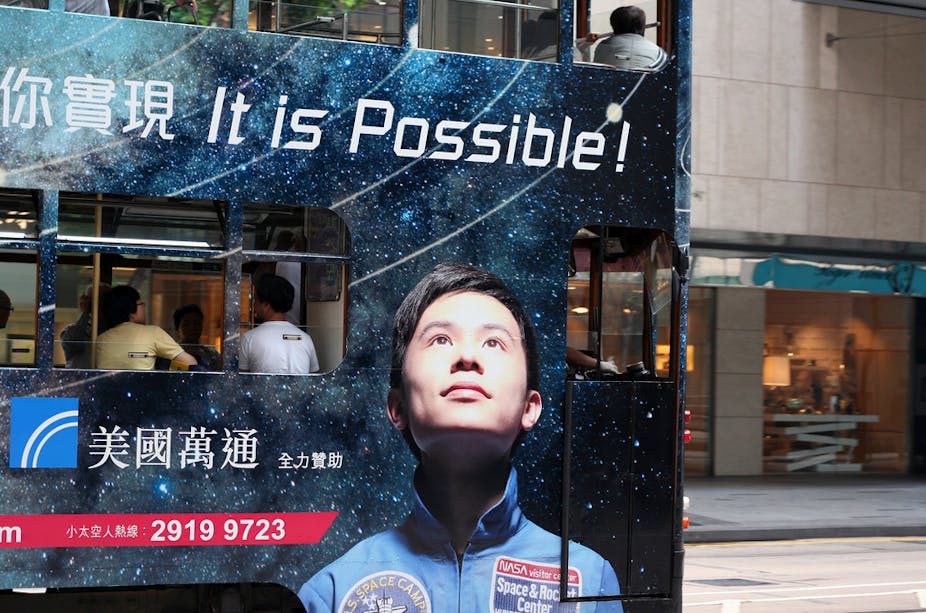Humanity is standing on the cusp of a huge technological leap. Commercial space flight could place something that has been the preserve of a chosen few (around 500 people) who’ve completed years of gruelling training, and a handful of people willing to hand over in excess of US$10m, into the grasp of thousands of “normal” people - and in time possibly millions.
That privilege is being able obtain a glimpse of our Earth – that beautiful blue marble with its fragile atmosphere - from the vantage point of floating in space. Such a prospect has been mooted for a number of years (and the subject of sci-fi dreams long before that) but it finally appears that Virgin Galactic and a number of other potential commercial space flight operators are in final preparations to offer their maiden tourist flight, albeit with a surprising menagerie of “space vehicles”.
If aviation is any guide then a world of tourist flights and perhaps even point-to-point travel (for example US to Australia in a couple of hours) may quickly become part and parcel of our inter-connected world. After all, aviation developed rapidly from the preserve of the rich, and the “crazy” Wright Brothers in 1903, to become an affordable way to spend a weekend away with the kids in less than a century.
Rich, old and overweight
Ascent and descent from microgravity will be associated with significant G-forces, and much has been made about the potential risks for the rich, old - and possibly overweight - who are exposed to physiological challenges more befitting of jet pilots. We just do not know how such hearts will react to the strain of attempting to maintain consciousness when pushing blood against more than 1G to the brain, and particularly when these people are likely to be experiencing a mixture of stress and exhilaration.
But if spaceflight becomes more “affordable” to families (projected costs vary but range from about US$100,000), I wonder what the effects might be on potential travellers at the other end of the age spectrum: children.
Picture the scene: can you imagine saying to your child “we are off to space now, but sorry you can’t come?” It may not cut much mustard. Indeed, it could even be argued it’s their human right to participate.

Children vs adults
For a range of reasons, but chiefly because of the ethical considerations of testing on children, we know very little about how a child’s physiology differs from an adult’s. Many drug doses are simply scaled to the size of that child (albeit with the tendency to err on the side of caution) with little or no objective science to base them on. Then if it works - and does not do too much evident damage - this becomes common practise.
Seven year-old Jules Andre Nader Drouet (reportedly after a month of strenuous training) became the youngest person to fly on a parabolic (zero gravity) flight where periods of around 22 seconds of “weightlessness” can be achieved with a brief period of hypergravity (where the force of gravity exceeds that on the surface of the Earth, around 1.8Gz) immediately prior to and following each parabola. He came back fine (as far we can tell) but there remains a feeling that such experiences are not for kids.
Interestingly, tests showed that cortisol levels (a major stress hormone) rose substantially more than that typically seen in adults – but perhaps unsurprising to any parent of a child who loves fairground rides, they loved the experience. Stress is not by definition bad and acute stress is part and parcel of your body’s defence mechanisms - placing the body in a state that can aid short-term performance, whether running from a tiger or sitting your GCSEs. Chronic stress is the killer.
Spirit of adventure
Children are pioneers. We’ve had solo circumnavigation of the globe by a 16-year-old Laura Dekker, an adventure arguably more inherently dangerous and where risk is linked to the actions and decisions of the child. Indeed she was forced to wait pending a court case with Dutch social services.
It was understandable that state-funded space agencies - pushing the envelope of what is possible - should have been barred from exposing children to the risks of our still immature understanding of space and spaceflight technologies.
It’s ironic that commercial airline operators such as British Airways, Virgin Atlantic and Emirates are urged by some business-class travellers to consider child-free flights or “zones” albeit for reasons of comfort.
Tragically, but thankfully quite rarely, children do die annually on fairground rides through a range of causes including internal organ bleeding and cardiac arrest, most of which would be extremely challenging, prohibitively expensive or simply impossible to predict. So a common sense approach based on risk and in conjunction with parents/guardians is taken. For commercial space flight to reach a point where children can fly, there needs to honest and open discussion that will need solid research, re-evaluation but ultimately some “lucky” pioneers.
Children are the future, as the saying goes. Maybe they will be sat next to you on SpaceShipTwo, Three or Four?

